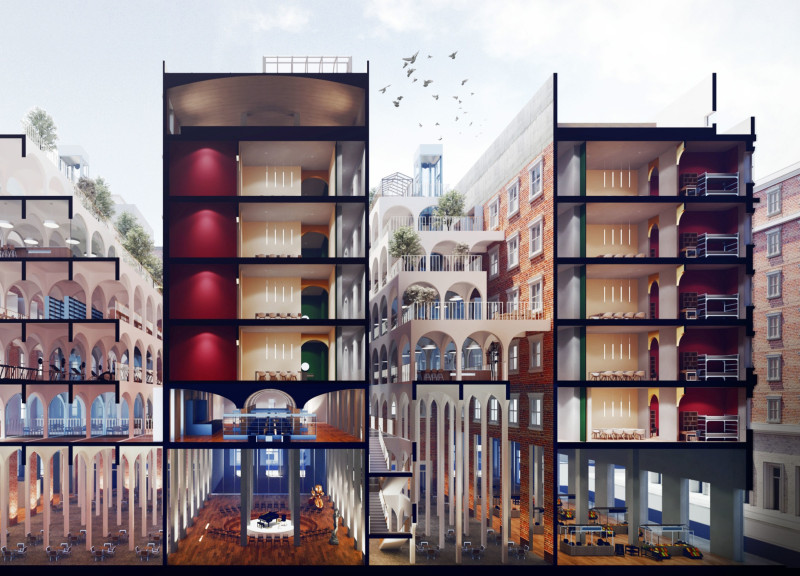5 key facts about this project
The design addresses housing challenges faced by residents in Rome, a city known for its rich history and cultural significance. The aim is to create a solution that balances the needs of local inhabitants with those of incoming tourists. This housing scheme encourages locals to become hosts for travelers, fostering both cultural exchange and economic opportunities.
Housing Scheme Structure
The proposal includes four main categories: host space, guest space, shared space, and public space. Accommodations for hosts and guests are designed as single units, meeting essential needs such as sleeping areas and private bathrooms. Shared spaces for cooking and recreational activities are placed in central courtyards, promoting interaction among residents and visitors and strengthening community bonds.
Public Engagement
The ground floor is designed as an accessible public plaza, encouraging interaction and engagement between locals and tourists. This space is open and welcoming, facilitating cultural exchanges and local events. The layout merges new structures for communal activities with existing architectural forms typical of Rome, helping to create a cohesive urban environment.
Architectural Features
A key design element is the "C" shaped corridor, which enhances natural light access in lower levels of the building. This aspect improves the atmosphere within interior spaces. The design allows for flexibility, enabling diverse activities on various floors, including leisure and fitness facilities. This adaptability is important for accommodating the different needs of residents, while also ensuring that visitors feel welcome.
Cultural Integration
The commitment to public engagement is further emphasized by opportunities for cultural programs, such as exhibitions and concerts, held in the vibrant plaza. This space serves as a critical meeting point for both local residents and visitors, enriching the community's social life and experience. Personal stories shared in presentations showcase how residents envision their improved lives within this living framework, highlighting the benefits of this innovative housing solution.
The overall design combines public and private spaces thoughtfully. This approach ensures functionality while creating opportunities for community interaction, embodying a modern vision of urban living within the historical context of one of the world's oldest cities.



























